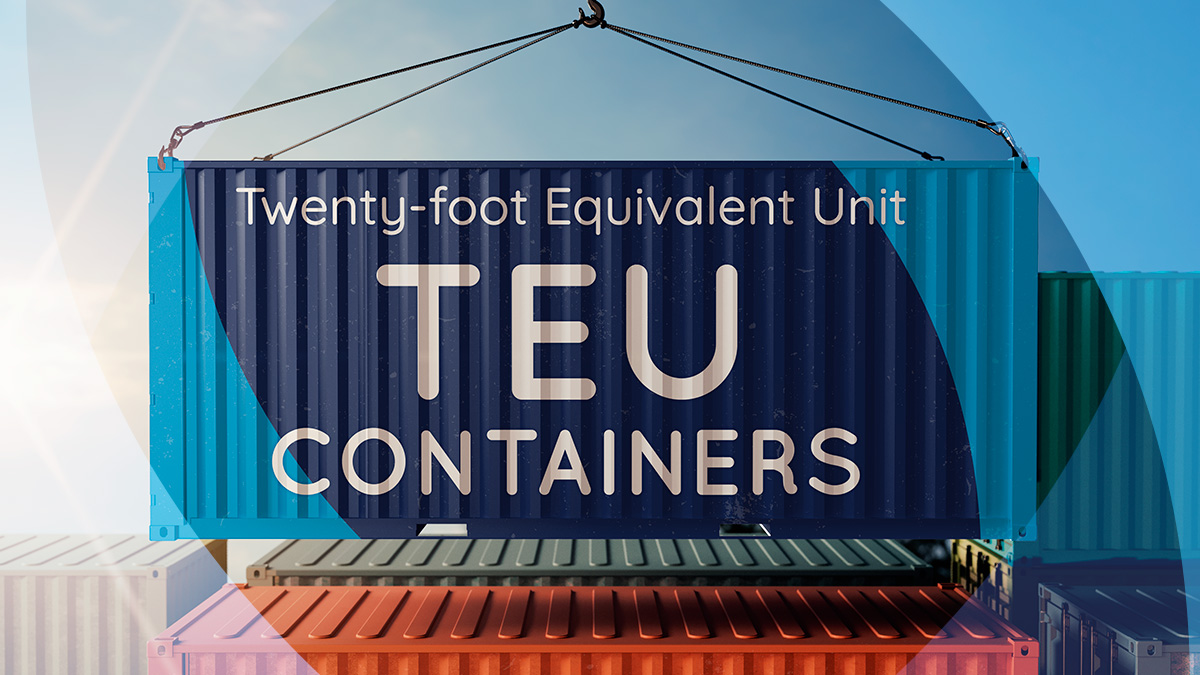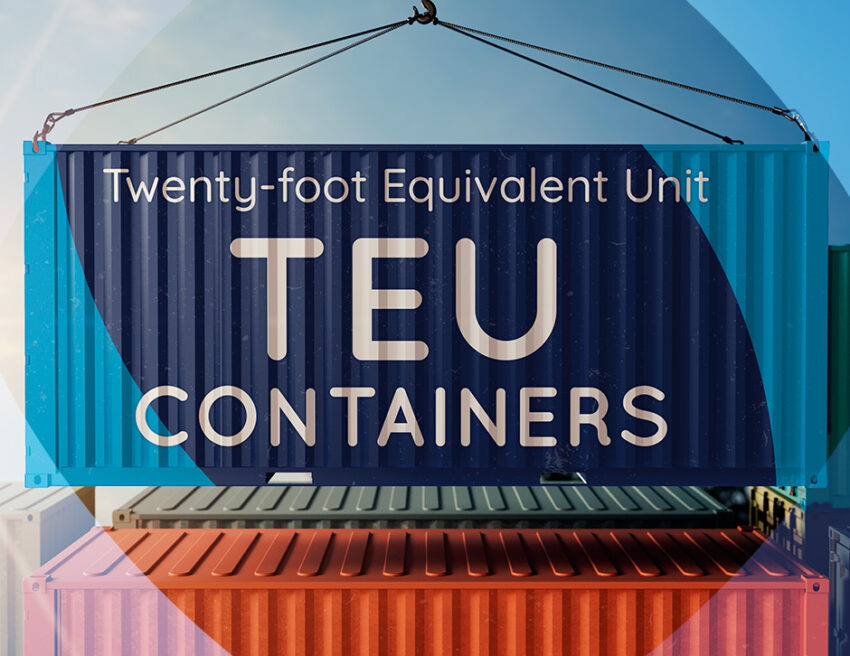“TEU,” or “Twenty-foot Equivalent Unit,” originally refers to a 20-foot shipping container. These days, it has evolved into a standard unit of measurement for cargo capacity in the container shipping industry. TEU containers facilitate seamless cargo transfer between different modes of transport, such as ships, trucks, and trains, thanks to their standardized dimensions. Keep reading this article to explore in more detail later the use of TEU containers for sea freight forwarders.

The use of TEU container in the container shipping industry
What are Twenty foot equivalent unit containers?
A Twenty-foot Equivalent Unit is the standard measurement used in ocean freight shipping sector to quantify freight capacity for freight ships and terminals. It is based on the capacity of a 20-foot intermodal shipping container. Container ships and terminals, which accommodate 20-foot and 40-foot intermodal containers, use TEUs as a benchmark to calculate their capacity for handling and storing containers. The ocean freight industry very commonly utilizes 20-foot containers for shipping cargo. These containers are best suited for heavy items rather than voluminous goods. Examples of suitable shipments for 20-foot containers include metals, machinery, cement, steel rods/coils, sugar, and similar heavy commodities.
The TEU capacity of container ships
Major industry players operate vessels with capacities exceeding 14,500 TEUs, while smaller feeder vessels typically hold 1,000 TEUs or fewer. One of the most common kind of container ships is the Post-Panamax, which has a TEU capacity ranging from 5,000 to 10,000. Another significant vessel type is the Neo-Panamax, which can hold up to 14,500 TEUs. The Ultra Large Container Vessels (ULCVs), which can be as long as 984 feet (300 meters) and are the largest vessel in the container shipping industry have capacities of 14,000 TEUs or more. The MSC Irina, the largest container ship in service as of 2023, boasts a capacity of 24,346 TEUs. In addition to ULCV and Post-Panamax vessels, the industry also utilizes small feeder ships with capacities between 1,000 and 2,000 TEUs, Panamax vessels with 3,000 to 5,000 TEUs and Feedermax vessels with 2,000 to 3,000 TEUs.
Differences between TEU and FEU containers
A regular TEU container measures 20 feet (6.1 meters) in length, 8 feet (2.4 meters) in width, and 8 feet (2.4 meters) in height. On the other hand, an FEU (Forty-foot Equivalent Unit) is twice the size of a TEU, measuring 40 feet (12.2 meters) in length while maintaining the same width and height of 8 feet. Essentially, FEU offers double the capacity of a standard TEU container. However, in this context it should be said that purchasing one 40-foot container is often more cost-effective than buying two 20-foot containers.
Major types of TEU containers
-
Open Top TEU containers
Open-top TEU ontainers are an ideal solution for cargo that exceeds the height constraints of standard 20-foot containers but doesn’t require the extra height of high cube containers. These containers, while not completely open at the top, are usually covered with a tarpaulin. This design allows for easy loading and unloading of out-of-gauge (OOG) shipments from the top, using a crane for efficient handling.
-
Flat rack TEU containers
Flat rack TEU containers are specifically designed to accommodate heavy or oversized cargo that cannot fit within standard shipping containers. Known for their versatility, they are ideal for transporting a wide range of bulky items, including construction equipment, various types of machinery or engines, wind turbines, and other oversized cargo. They are especially useful in situations where conventional methods for moving crates across uneven surfaces are impractical. Additionally, flat rack containers offer logistical flexibility as they can be easily transported by road on open trucks or specialized trailers, making them a highly attractive option for ocean freight forwarders.
-
TEU Reefer containers
TEU reefer containers, are specifically designed to maintain temperatures significantly lower than standard containers. When transporting perishable goods such as pharmaceuticals, vegetables, meat, dairy products, flowers, and other temperature-sensitive items, choosing the right reefer container is crucial. They come with advanced refrigeration and insulation systems to ensure your shipment stays within the prescribed temperature range throughout its journey.
Beyond precise temperature control, reefer containers feature large sliding doors that facilitate easy loading and unloading of goods, improving operational efficiency. Recent technological advancements have further improved these containers, making them safer and more efficient for transporting temperature-sensitive items and meeting the evolving needs of the industry.
-
TEU IMO containers
When transporting hazardous goods such as dangerous liquids, gases, or radioactive materials, selecting tank containers or IMO containers is crucial. Named after the International Maritime Organization (IMO) that regulates their use, these containers play a vital role in ensuring the safe transportation of hazardous cargo and minimizing environmental risks.
Tank containers are specifically designed for the transport of dangerous goods, featuring a cylindrical tank made from corrosion-resistant materials. These tanks are enclosed within a sturdy steel frame, providing enhanced protection during transit. Some tank containers also include multiple compartments, separated by partitions, to accommodate different types of cargo.


